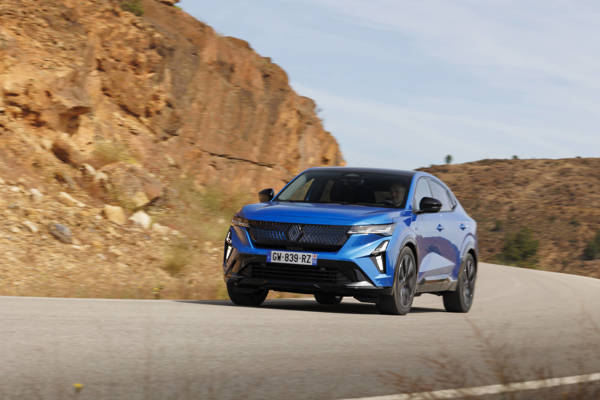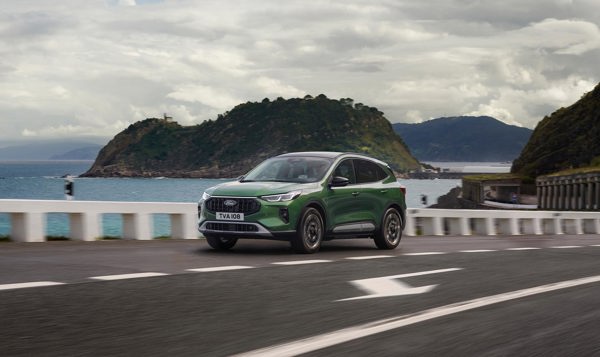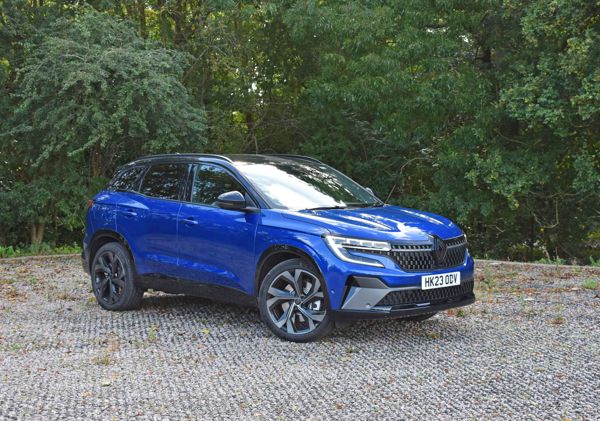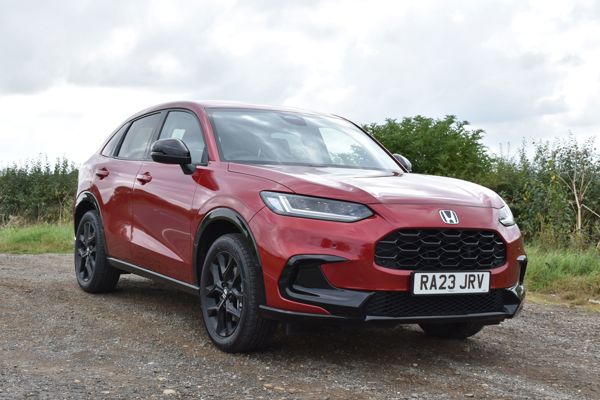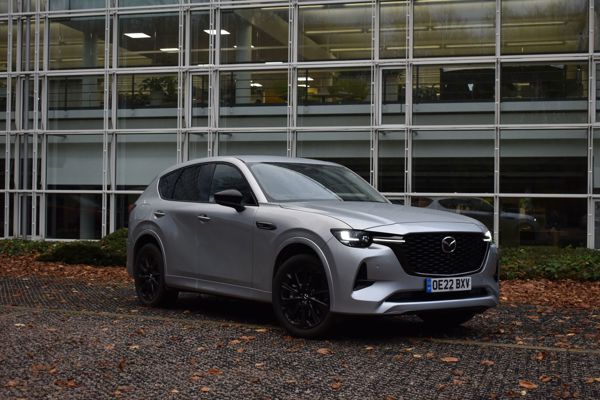Review
In the six months driving the Vauxhall Grandland GS Line Hybrid-e I never witnessed it reach the stated WLTP charge capacity range of 39 miles.
A temperature dip to just above freezing saw the available miles drop to around 18 and charging to capacity at work using a 22kW charge box, with the car able to charge at just 3.7kW, took 3.5 hours to bring the battery to a maximum 29 miles when the air temperature rose to double figures.
That’s a 38% difference in range. On the official range, it’s a 54% weather-induced reduction.
This phenomenon is something to be aware of when procuring electric and plug-in hybrid vehicles and planning their use. The Grandland isn't alone, either, other cars on our test fleet suffered similar drops in range as temperatures fell.
A range of 29 miles was nearly enough to get me to work in Peterborough, with zero emissions in a city environment just where they’re needed the most. Charging at work also meant ‘clean’ driving out of the urban environment.
Bear in mind the three driving modes available too. While hybrid is the default, providing a mixture of electric and petrol power, a pure EV mode makes the most of the car's zero-emission capability and the Sport mode gives more response when you need it. There's also an e-Save feature, which allows you to specify the amount of battery charge to save for later.
I’ve been reassured by the level of kit in our GS specification car (only missing heated seats in the winter months). In particular, the park-assist and 360-degree panoramic camera, when you need to get close to the charge points at home without hitting the garden wall, or work, fitting tightly between other EVs.
Additional safety features under the Vauxhall’s PureSense umbrella also include lane departure warning and lane-keep assist, side blind spot alert, speed sign recognition, driver drowsiness alert, and automatic emergency braking and cruise control.
Lane departure warning is one I became familiar with the most, with its chime and dashboard warning, activated when driving above 37mph and I’d not moved the steering wheel or signalled when the car had moved outside its lane markings. I drive on country lanes a lot, often without markings and the system appeared to chip in simply when I hadn’t moved the steering wheel at all, it's easy to switch off, however.
The Grandland has proved to be an efficient and practical SUV during its time on the Fleet News test fleet. Over 8,000 miles it averaged north of 60mpg, which is highly impressive for a vehicle of this size. When driving on long motorway trips, where electric range was limited, the car still managed more than 40mpg. The ride can feel a little firm at times, but thanks to the AGR-certified - that's the German campaign for back-pain prevention - seats, you never leave the Grandland feeling uncomfortable.
Infotainment simple but a little dated
Vauxhall PureConnect is a suite of infotainment and safety features available on the Grandland. It’s centred around the 12-inch digital instrument panel and the 10-inch centre touchscreen. Apple CarPlay and Android Auto come as standard on all models, while sat-nav is fitted on GS models, like ours, and above.
The system is especially easy to use with clear and uncluttered graphics and menus. Compared to some of the latest offerings on the market, however, the Grandland's infotainment system seems a little dated and we often opted to connect a smartphone to utilise Spotify and Google Maps. The system fitted to the new Vauxhall Astra is a marked step-up.
One our biggest gripes is that the 10-inch screen is under-utilised in the Grandland, by unnecessarily showing the climate control information in two black sections on either side of the display. This means the usable screen area is more like seven inches. The climate control panel, mounted lower on the dashboard shows the same temperature information and is a small frustration on an otherwise logical layout.
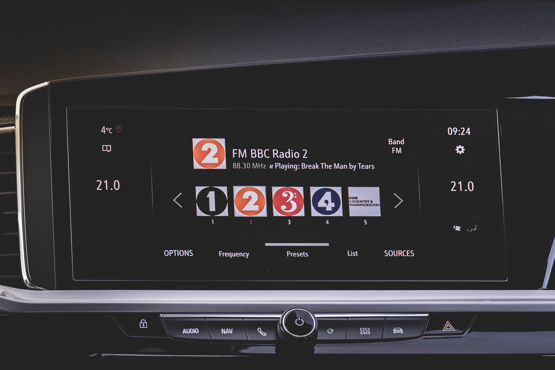
An app, called MyVauxhall, can be downloaded to your smartphone. Primary features include navigation, the ability to set a route to your vehicle, set your location (and share it), maintenance reports, details of your local Vauxhall dealer as well as information on its network, and the ability to report a breakdown.
With electric and hybrid models, the offering is expanded to include charging scheduling, range information and setting the cabin temperature before a journey. These connected features are essential when running a plug-in vehicle as it allows you check the charging status and monitor your fuel and electricity consumption.
VauxhallConnect services are included for 10 years, at no charge. They include emergency call, breakdown call, vehicle information, remote services, trip and drive management.
Running costs compared
There are 14 hybrid models in the medium SUV segment, ranging in P11D price from the MG HS at £31,040 to the Jaguar E-Pace P300e at £49,385.
I want to compare the running costs of the Grandland Hybrid with three key competitors.
Our Grandland GS Line has a P11D price of £37,400 (at the time of writing) and, as such, I’ve compared it with the Citroën C5 Aircross Hybrid Shine (P11D £35,880), Ford Kuga PHEV ST-Line Edition (£37,700) and Peugeot 3008 Hybrid Active Premium (£39,105). The Grandland shares parts with the Citroën and Peugeot, including the plug-in hybrid powertrain.
The running costs tool on fleetnews.co.uk considers service maintenance and repair, residual value, fuel and depreciation to provide a total cost per mile figure.
How competitive is the Grandland on a four-year/80,000 mile operating cycle?
Its total pence per mile (ppm) cost is 40.2. It beats the 3008 with a figure of 42.1ppm, but is more expensive than the Ford and Citroën with figures of 38.2ppm and 37.8ppm respectively.
It’s similar with RVs – the Vauxhall’s is £11,581, the Peugeot’s £11,420, compared with the Citroën’s £11,708 and Ford’s £12,822 – and depreciation, with our car at 32.3ppm, the 3008 34.6, beaten by the Citroën at 30.2 and Kuga 31.1.
The 3008’s SMR cost is less than the Grandland’s at 4.27ppm compared with 4.3ppm, the Kuga’s the highest at 4.6. Citroën just takes the crown at 4.25. The ranking is mirrored when measuring fuel per mile, with the Grandland coming in the highest at 3.6ppm.
When it comes to benefit-in-kind, the Grandland sits in the 12% bracket, as a result of its 39-mile zero-emission range. As such, a driver will pay £888 per year in tax for the Vauxhall while the Peugeot would cost £914. The Ford Kuga slips into the 8% band so drivers will pay £603 per year for that car, while Citroën recently announced an update for the C5 Aircross that also places it in the 8% banding, achieving the lowest BIK of the group at £574.
A note on the Grandland’s battery range. I haven’t been able to get it to more than 23 miles. When temperatures are nearing freezing it has been lower.
Understanding the powertrain
Let’s explore the most significant feature of our Grandland – its electric hybrid capabilities.
Combined with the 180PS 1.6-petrol engine is a 13.2 kWh capacity battery and electric motor providing a total of 225PS. In a move designed to maximise interior space, the battery is located under the floor.
The car has an official zero emission range of 39 miles (WLTP) and has a combined fuel economy of 192mpg. It delivers impressive performance, with 0-60mph taking just 8.9 seconds.
Drive is sent to the front wheels via an eight-speed automatic transmission. In everyday driving the powertrain offers reasonable refinement, often running purely on electric power in town and when decelerating. The transmission can be a little hesitant at times, especially if you need to call for power unexpectedly. There's a short pause before the petrol engine surges into life and hurls the car forward. Sometimes it feels as if the power is delivered a little later than we'd like but there's no denying the Grandland is able to shift when you really need it too, especially in the Sport drive mode.
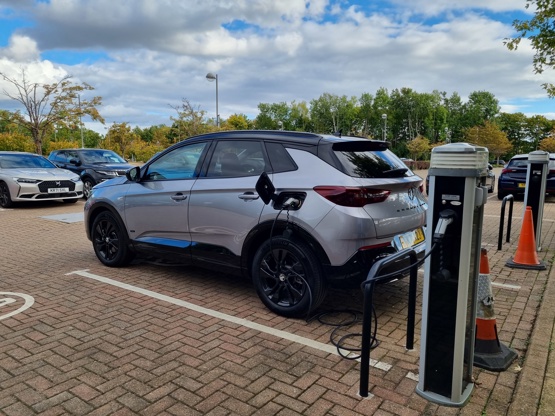
But, is that battery range is adequate? In 2020, research by the RAC Foundation said the newest cars in Great Britain do an average of 10,377 miles in each of the first three years of ownership, or 28 miles per day.
I’m using a 22kW charge box but the car can only charge at 3.7kW, which means it takes about 3 hours 30 minutes to bring the battery to maximum. I haven’t yet seen it at the claimed range of 39 miles. It seems to settle at around 29 miles. The regenerative braking function is said to boost the range by up to 10%.
The Grandland Hybrid-e comes with three driving modes. Hybrid is the default, providing a mixture of electric and petrol power; Sport provides maximum power and performance using both and Electric uses the battery only.
There’s also the e-Save feature. Drivers can specify the amount of battery charge saved, for example, to ensure driving with zero emissions in an urban setting, on a journey. To keep the driver informed, the cabin’s central touchscreen provides information about the electric powertrain, including a powerflow display about the charge state and distribution of energy from the engine and battery.
Energy usage, range, charging information, driving modes are right in front of you. I’ll be exploring all these features in the next few months with the Grandland.
Safety comes as standard
The Grandland offers a host of safety features, some familiar, some new to Vauxhall or to the model.
Vauxhall says the car is “part of a new generation of intelligent Vauxhall models”, and its safety spec forms the basis of the PureSense family of features.
All Grandland Hybrid-e models come with lane keeping assist, adaptive cruise control, active emergency braking and speed sign recognition.
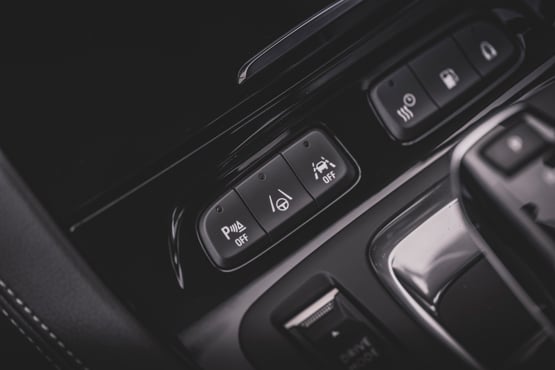
There is also an advanced park assist system and 360-degree panoramic camera, giving the driver a bird’s eye view on the console touchscreen making manoeuvring safer and meaning the car can parallel or perpendicular reverse park itself. The setup only comes as standard on the range-topping Ultimate specification grade, however. Our GS model makes do with a regular reversing camera and front and rear parking sensors.
A night vision feature is a first for Vauxhall and another features reserved for the Ultimate. It uses an infrared camera that is capable of detecting pedestrians or animals up to 100 metres ahead, based on differences in respective surface temperatures, and displaying the image in the instrument cluster.
The Grandland GS comes with LED headlights and automatic high beam assist. Opt for the Ultimate and the car features the IntelliLux LED pixel light headlights (84 LED elements per headlight), that automatically adapt the beam pattern to the road ahead.
Vauxhall Grandland Hybrid-e GS joins our fleet
With the C-SUV segment representing around 18% of the UK’s new car market – and 20% of fleet – according to Society of Motor Manufacturers and Traders (SMMT) figures, it makes sense for competing brands to be at the top of their game.
Enter Vauxhall, revealing in the spring a series of upgrades to its biggest crossover – the Grandland – entailing a reduction in pricing, improved residuals, simplified range, a new look incorporating the Vizor front first revealed on the Mokka SUV, and instrumentation.
Most notably in this era of fleet EV transition comes a plug-in hybrid (PHEV) option, sitting alongside a 1.2-litre petrol and turbo diesel engine in the range.
The Grandland shares parts with the Peugeot 3008, including the hybrid powertrain. It combines a 1.6-litre petrol engine with an electric motor, powered by a 13.2kWh battery, giving a total output of 225PS. In electric-only mode its range is quoted at 39 miles (WLTP).
The car’s CO2 emissions rating of 31g/km means a benefit-in-kind rate of 12%.
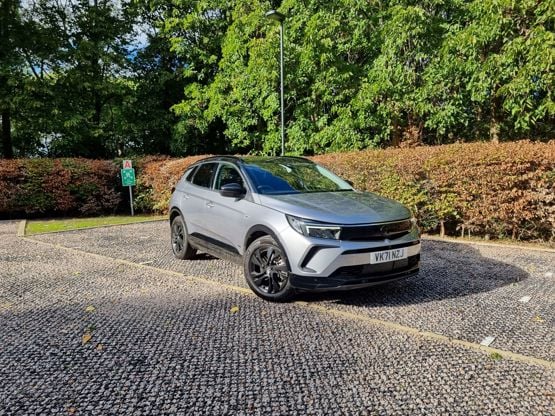
The PHEV is part of Vauxhall’s commitment to be an electric-only brand from 2028, two years before the ban on the sale of new ICE (internal combustion engine) models and seven before new hybrid sales must cease. It will be a key focus of our impressions in the next six months, with PHEV sales expecting to exceed the 114,554 sold in 2021, or a 70% market growth year-on-year.
The Grandland is available in the specifications, Design, GS (our car) and Ultimate. There's also a range-topping GSe variant that uses a 300PS plug-in hybrid engine. Safety features as standard include front and rear parking sensors, lane departure warning with lane-keep assist, driver drowsiness alert and automatic emergency braking.
GS enhancements include adaptive cruise control and 180-degree view parking camera. Ultimate includes a 360-degree camera and side blind spot alert and advanced park assist.
There’s no sat-nav with Design, but it’s added from GS. while the PureConnect infotainment system improves from seven-inch to 10-inch touchscreen from GS Line. Apple CarPlay and Android Auto compatibility are standard throughout.
Choose the Hybrid-e and you’ll get familiar electric perks such as warming (or cooling the car) pre-drive, perfect for the winter.
Jeremy has been a journalist for 30 years, 20 of which have been in business-to-business automotive. He was a writer and news editor on Fleet News for three years. He is Bauer B2B’s head of digital operations helping to manage the digital assets of Fleet News and Commercial Fleet, together with sister-brands AM and Rail. For six years he was AM's editor.


Specs
| Manufacturer | Vauxhall |
| Model | Grandland |
| Specification | Grandland SUV Hybrid 1.6 PHEV 13.2kWh 225 GPF SS €6 GS Line Auto8 23MY |
| Model Year | 0.00 |
| Annual VED (Road tax) | £0 |
| BIK List Price | £37,400 |
| CO2 | 28g/km |
| BIK Percentage | 8% |
| Insurance Group | N/A |
| CC | N/A |
| Fuel Type | Petrol Hybrid |
| Vehicle Type | SUV and Crossover |
| Luggage capacity (Seats up) | 5litres |
Running Costs
| P11D | £37,400 |
| Insurance group | N/A |
| Fuel Type | Petrol Hybrid |
| Cost per mile | 100.98ppm |
| Fuel | 3.76ppm |
| Depreciation | 94.14ppm |
| Service maintenance and repair | 3.08ppm |
Rivals
Info at a glance
-
P11D Price
£37,400
-
MPG
201.0 (WLTP) -
CO2 Emissions
28g/km -
BIK %
8% -
Running cost
3 Year 60k : N/A 4 Year 80k : N/A -
Fuel Type
Petrol Hybrid



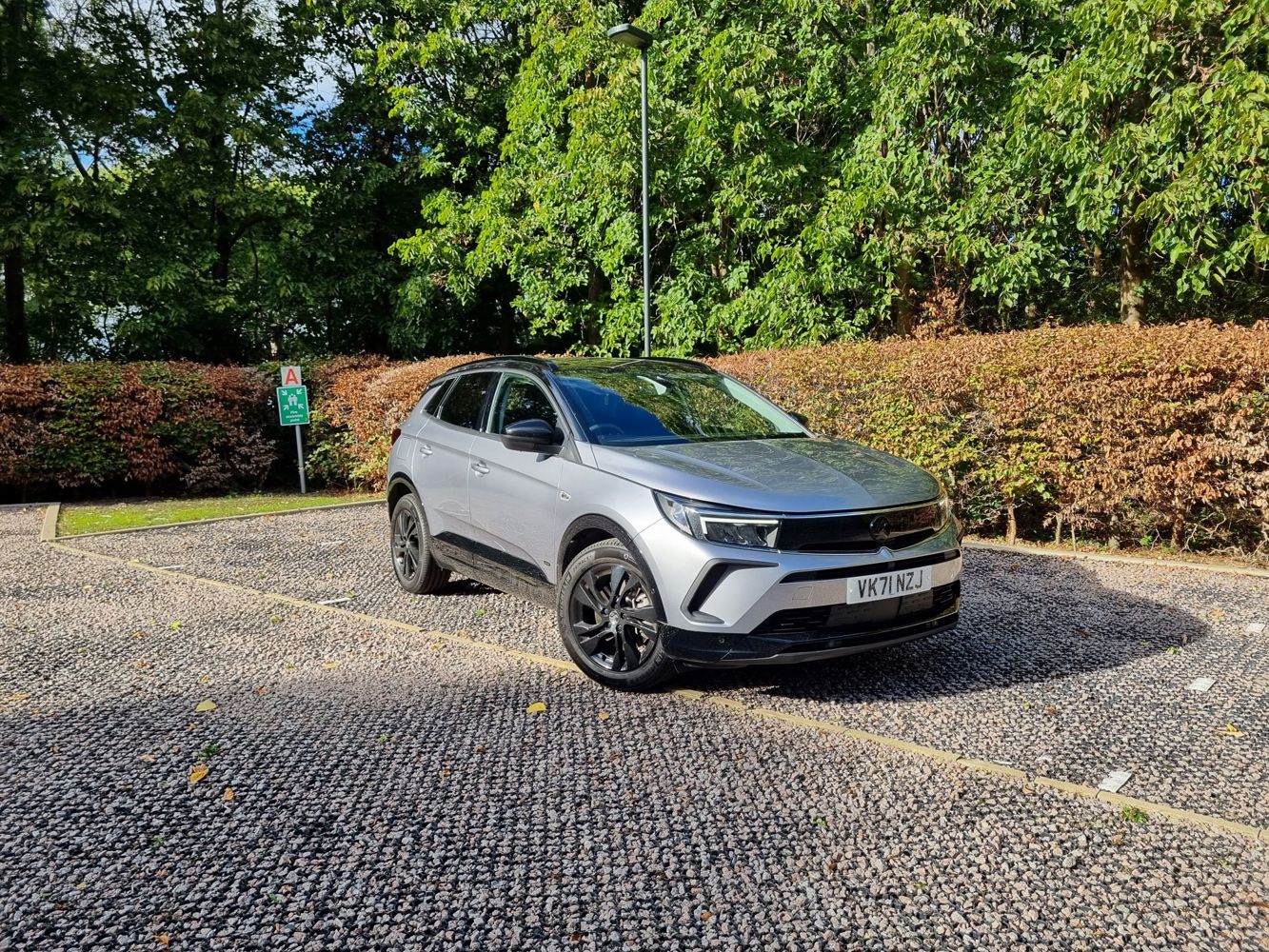




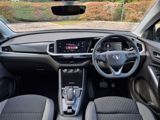


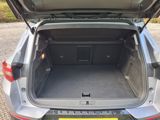
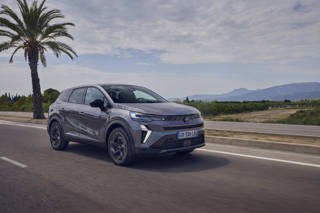
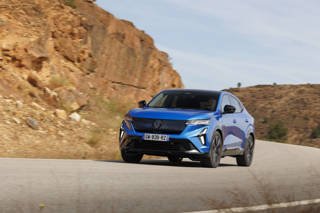
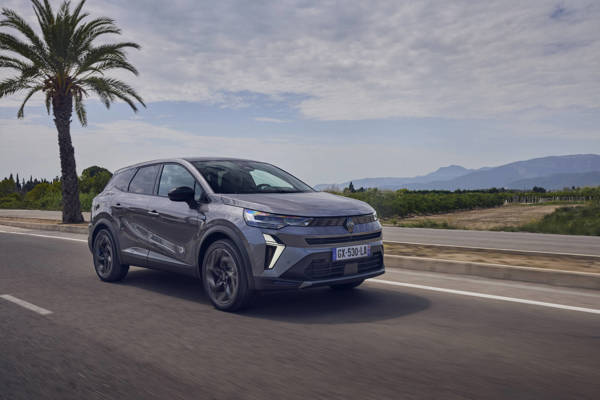
 Petrol Hybrid
Petrol Hybrid
